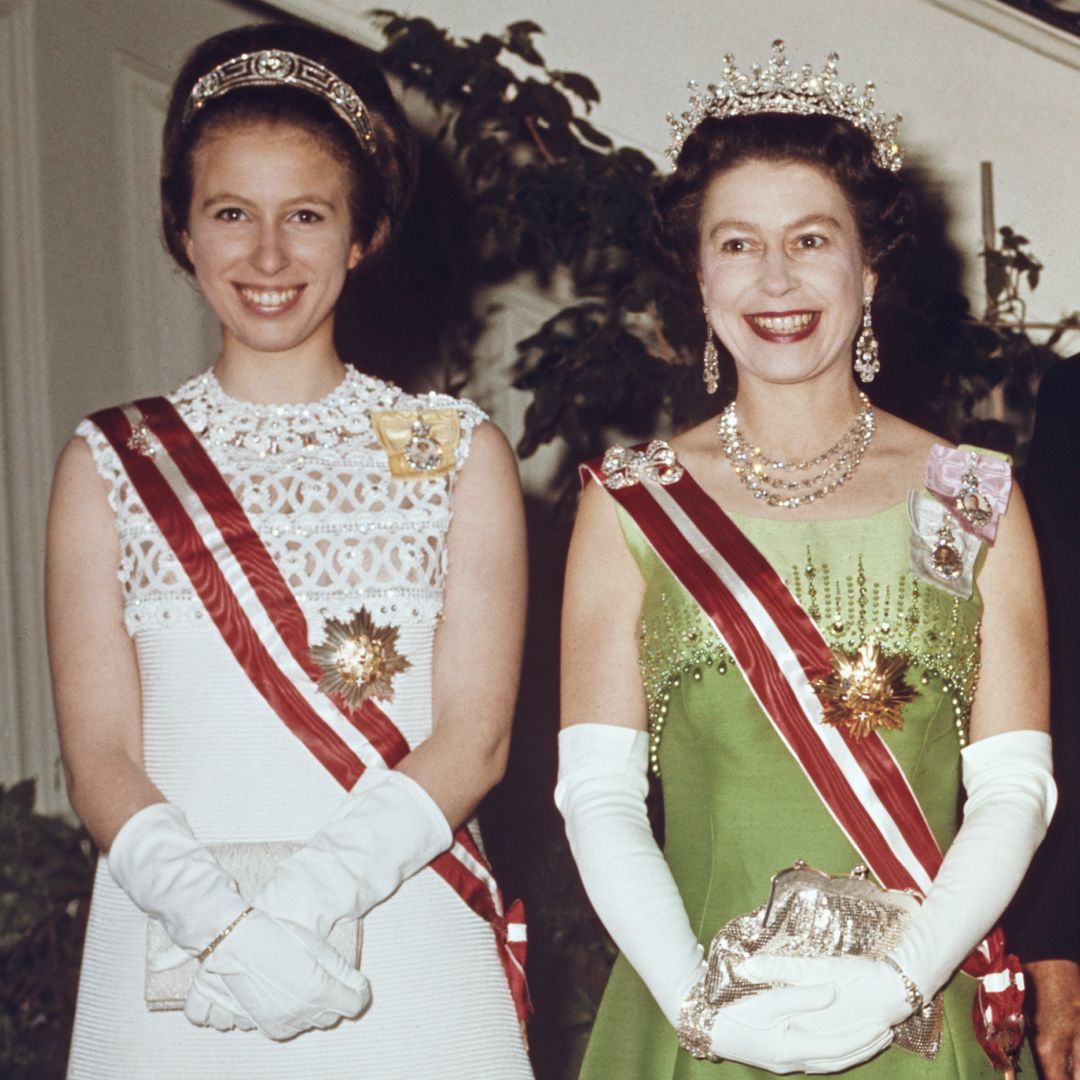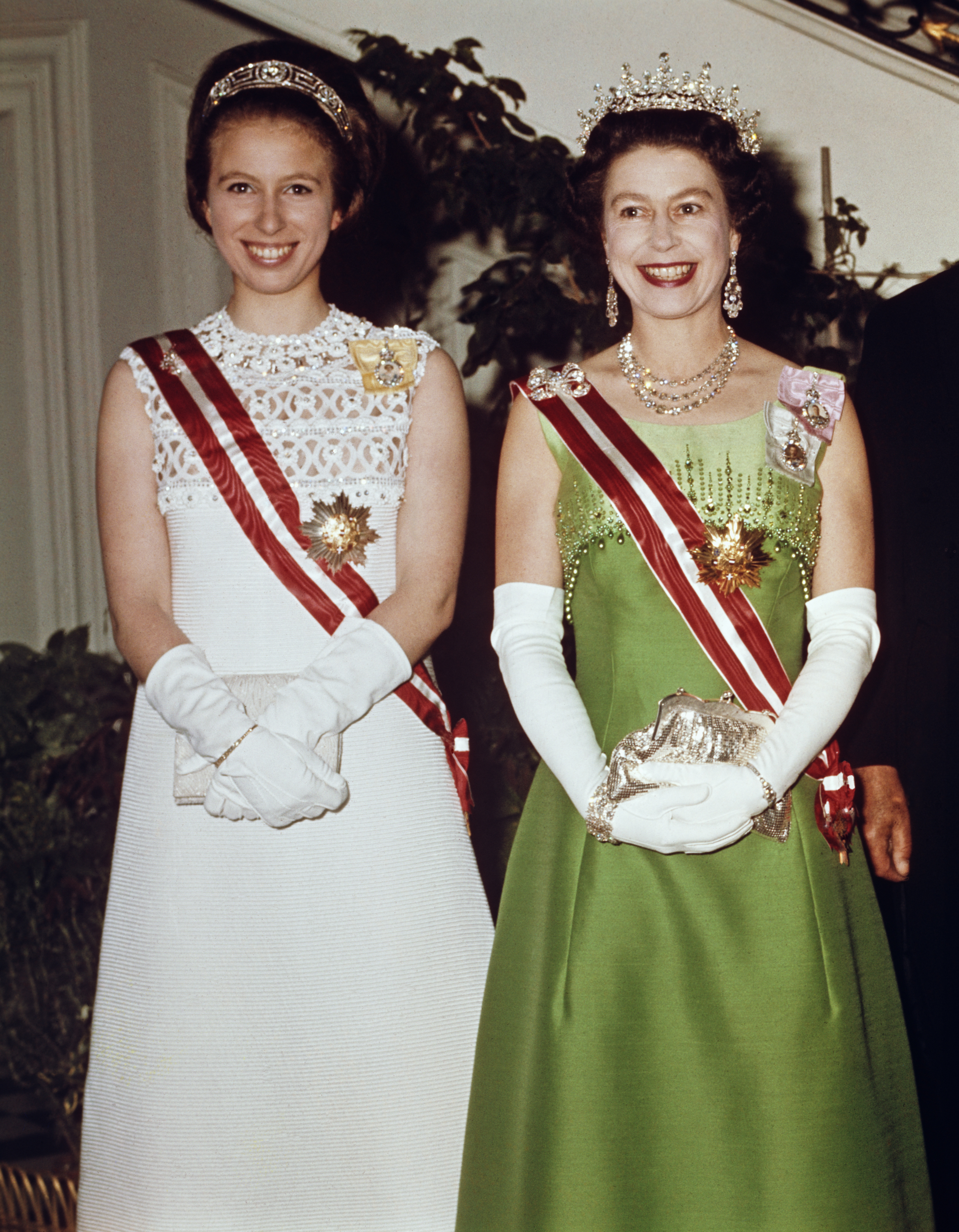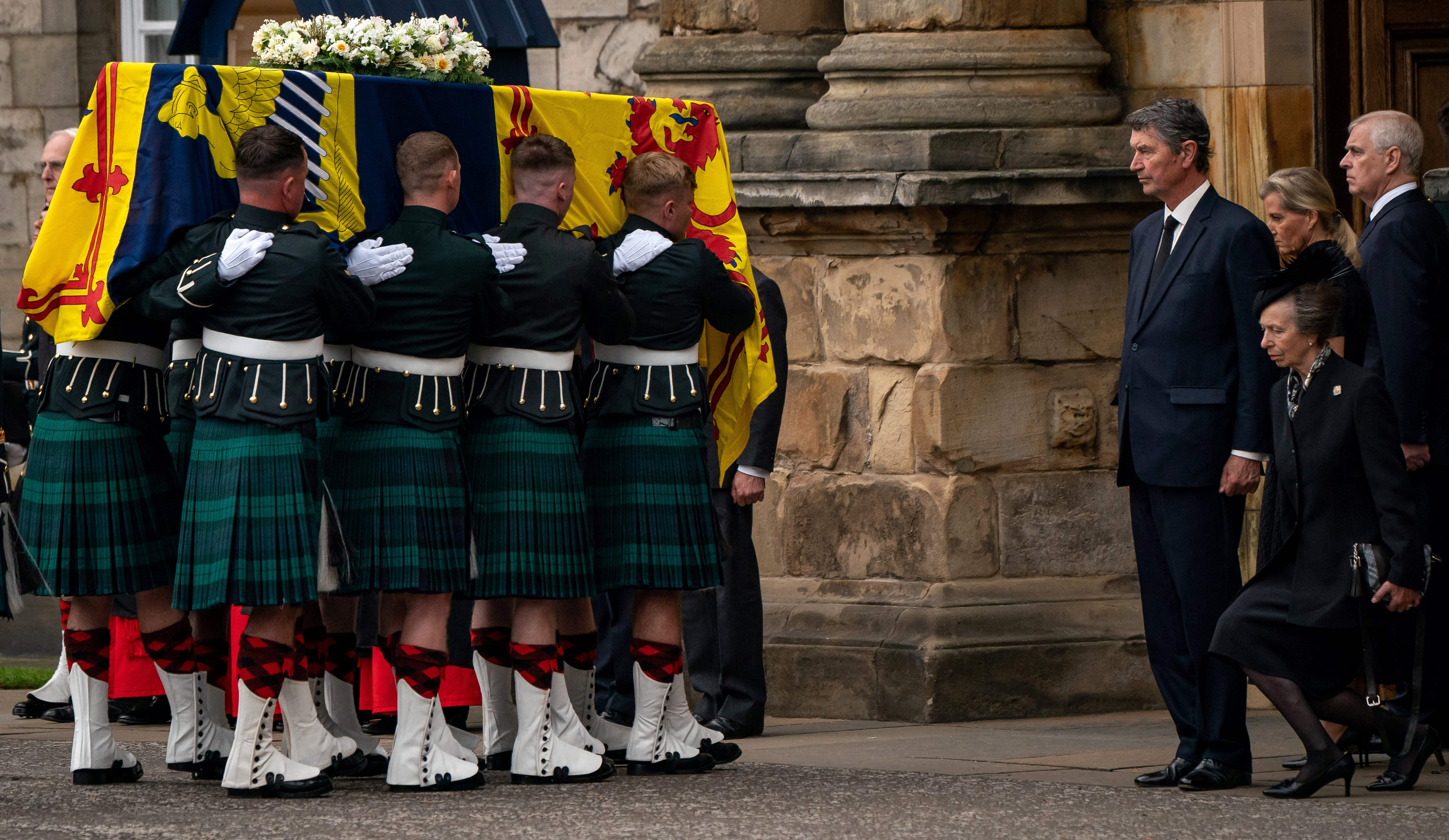
When it comes to royal etiquette, few traditions spark more stress than the idea of curtsying. For those meeting the Royal Family, knowing when—and to whom—to curtsy or bow to can feel like a social minefield. Even within the Royal Family, the rules of deference can weigh heavily, as author Craig Brown wrote in his biography Q: A Voyage Around The Queen. Noting that Queen Elizabeth "took the order of precedence very seriously," he shared the intricacies of curtsying—and how Princess Anne took royal etiquette even more serious than most.
Brown wrote that Queen Elizabeth "expected everyone, including her sister, her mother and her children, to greet her with a bow or a curtsy"—even when "others in her circle" thought the practice was "roughly a couple of centuries out of date."
Throughout her 70-year reign, members of the Royal Family dutifully bowed or curtsied to Queen Elizabeth—even when viewing her coffin—but Brown noted that one member of the family "took it further." According to the author, "A friend of Princess Anne noticed that she would automatically stand up when taking a telephone call from her mother."


As the times (and marriages) changed, the author noted that "rules had to be rejigged" as to who curtsied to whom, calling it "a matter of some complexity." When Camilla Parker Bowles married Prince Charles in 2005, Queen Elizabeth tasked her private secretary with creating a document titled "Precedence of the Royal Family to be Observed at Court."
This laid out who would curtsy to each other, and only Duchess Sophie, who was born to a middle-class family, was required to curtsy to Camilla at the time. When Kate Middleton married Prince William, the rules changed again, and when Meghan Markle started dating Prince Harry she was given a crash course in curtsying by none other than Sarah Ferguson.
However, the tradition might not be long for this world. Earlier this year, etiquette expert William Hanson told Marie Claire that he "wouldn't be surprised" if bowing and curtsying goes away for all but the most formal of court occasions when Prince William takes the throne.







